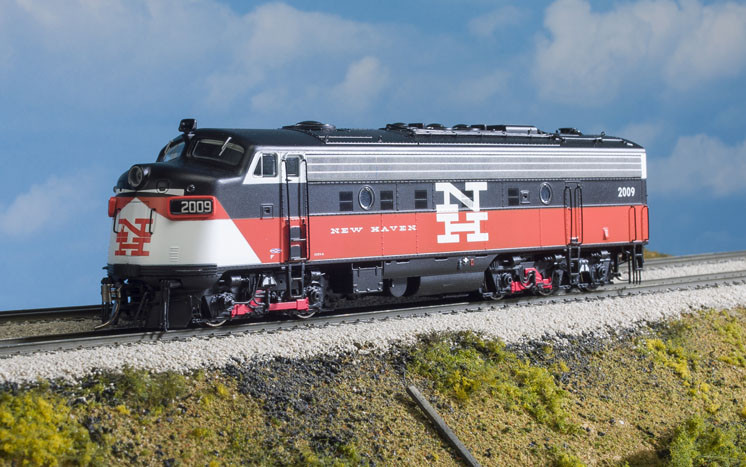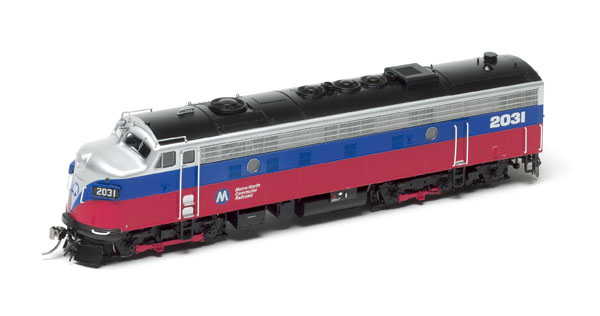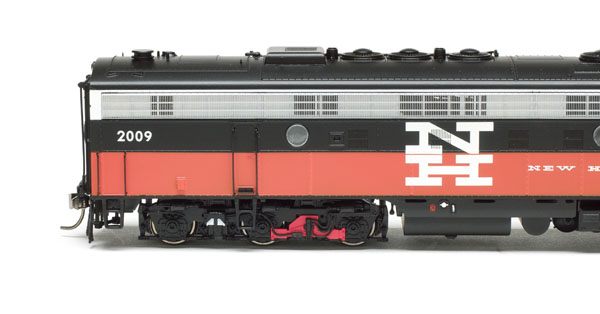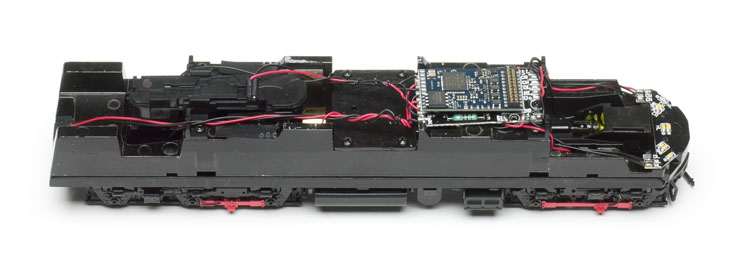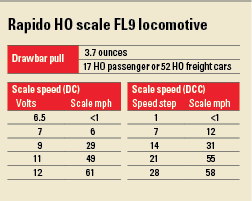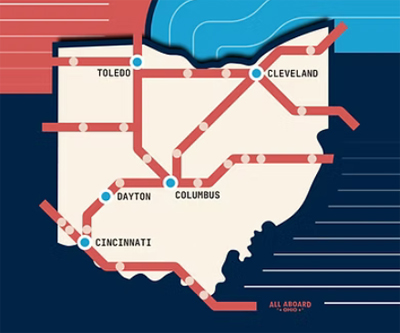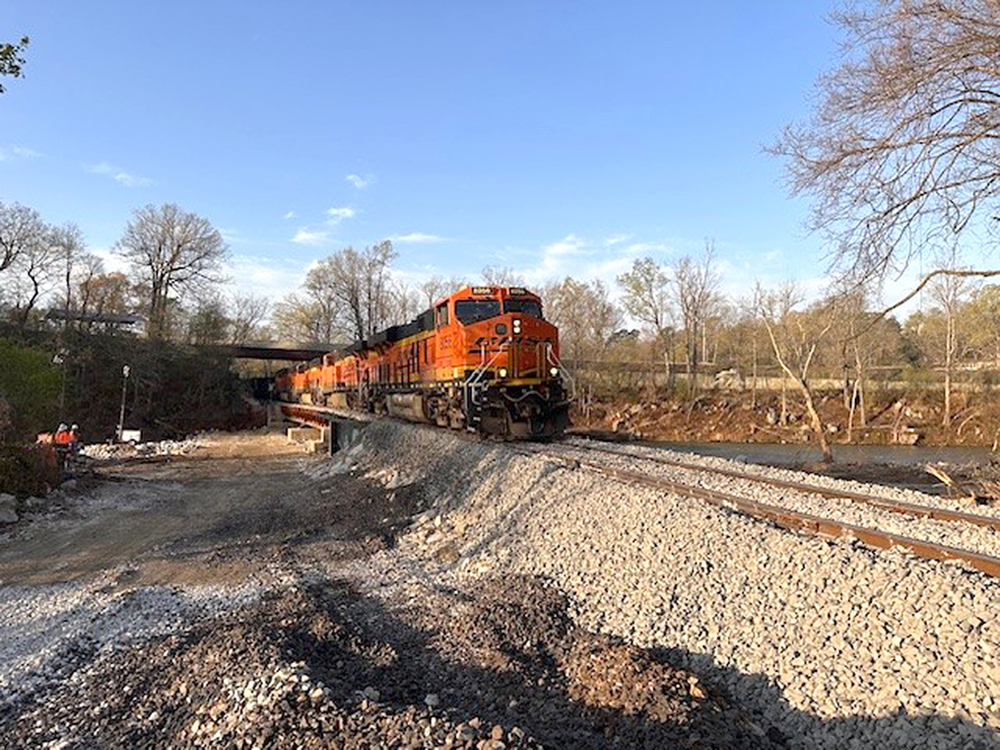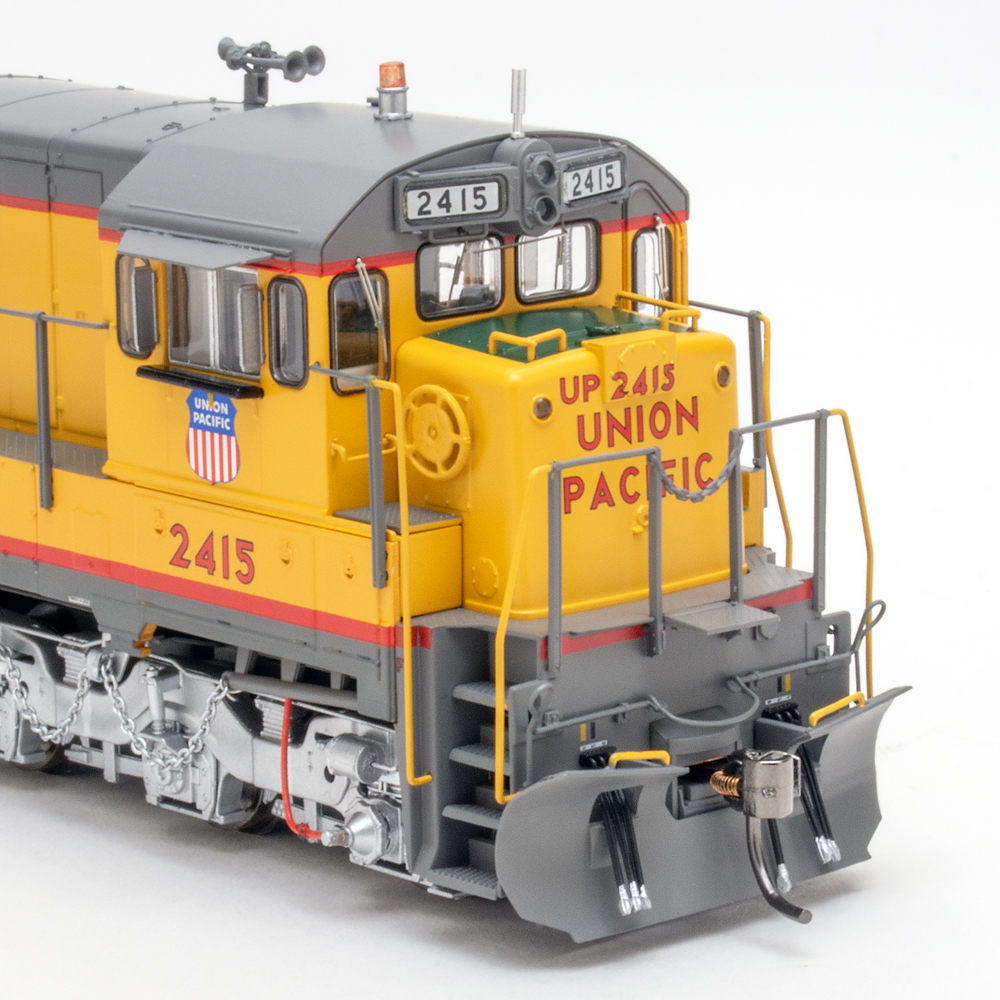No, this is not yet another F7. Yes, Rapido’s HO scale FL9 is an F unit, but it’s unlike any other that was built. This diesel-electric locomotive had third-rail pickup shoes to operate in the New York City electrified zone.
The prototype. The Electro-Motive Division FL9 was the solution for the New York, New Haven & Hartford RR’s problem of getting trains into and out of Manhattan’s Grand Central Terminal. A 1903 law banned steam locomotives from Manhattan, so the lines were electrified. By the end of World War II, the New Haven was in the market for new locomotives for its commuter service. Although parts of the New Haven were electrified, the management under Patrick McGinnis wanted to remove the overloaded system.
The FL9, an F9 with a lengthened frame, could operate from third-rail shoes in the electrified zone, but diesel power outside New York City, thereby reducing the load on New Haven’s marginal electrified system. The longer frame accommodated the extra equipment needed for this commuter duty. A six-axle A1A rear truck helped spread the locomotive’s weight, important for loading requirements on the Park Avenue viaduct leading to Manhattan’s Grand Central Terminal.
New Haven ordered 30 FL9s in 1956, then another 30 in 1960. The locomotives were powered by 16-567 diesel engines of 1,750 and 1,800 horsepower, respectively.
The locomotives went through several owners over their lifetimes, and with rebuilds, served into the 2000s. The last FL9 operated for the New York Metropolitan Transit Authority’s Metro-North Commuter RR in 2009.
The model. Rapido offers its FL9 in two versions matching the two batches of locomotives delivered to the New Haven. The models have details specific to their paint schemes, too.
We received two samples. The New Haven locomotive, in the New Haven McGinnis-era scheme of black, white, and orange-red, was detailed as a first-batch locomotive in as-delivered form, so it has nose M.U. doors, roof-mounted cooling coils for the 16-567C engine, a Hancock air whistle, and a pantograph for overhead third rail. The pantographs were removed in the 1960s.
The Metro-North locomotive, in a silver, blue, and red scheme, was detailed as a locomotive from the New Haven’s second order. The ledge on the engineer’s side of the nose is a handy spotting feature, although they were later added to older locomotives.
The models have Flexicoil trucks, with two axles in the front and three axles on the rear. On the full-size locomotive, the center axle on the rear truck was an idler. All axles are powered on the model.
Dimensions match those published in Model Railroader Cyclopedia, Vol 2: Diesel Locomotives (Kalmbach Publishing Co., out of print), and Diesels to Park Avenue, the FL9 Story by Joseph R. Snopek and Robert A. La May (New England Rails Publishing, 1997).
Lettering was accurate on both samples. The paint was opaque and evenly applied, but there was some fuzziness and misalignment on the nose of the Metro-North sample. Alternate road number decals are included.
On the test track. I started testing on direct current (DC). Start-up sounds commenced at 5V, and at 6.5V the locomotive started moving at less than 1 scale mph. At 12V, the locomotive reached 61 scale mph. Unless you have an analog sound controller such as a Model Rectifier Corp. Tech 6, the only sounds available are the engine sounds, which notch up and down with voltage.
In DCC, the ESU LokSound decoder offers the full array of diesel-electric locomotive sounds, plus some features unique to Rapido’s FL9. One that caught my attention was Grand Central Terminal Mode, accessed with function 14.
When the FL9s headed into the tunnels for Grand Central, the diesel engine was shut down and a large drum switch was set to draw power from the 600V third rail. Pressing F14 locks the prime mover in idle, but increases the volume of the traction motor blowers. Pressing F8 will shut down the diesel engine sounds, but leave all other sounds working. Although the Hancock air whistle produces an unexpected sound for a diesel locomotive, it sounds like the examples I found online.
On Model Railroader’s club layout, the Milwaukee, Racine & Troy, Rapido’s FL9 had no trouble pulling a three-car passenger train up the 5.5 percent grade connecting the staging areas.
The locomotive had very good slow speed operation in DCC, moving at less than 1 scale mph in speed step 1. In speed step 28, the locomotive topped out at only 58 scale mph, which is slower than the prototype, but fast enough for most model railroads.
If you’re modeling commuter operations into and out of New York City, Rapido’s FL9 fills a hole in the rosters of layouts set from the late ’50s into the early 2000s. With all of its DCC features, this locomotive will make that a fun era to re-create.
Price: $349.95 (DCC sound) $249.95 (DC, no sound)
Manufacturer
Rapido Trains Inc.
500 Alden Road, Unit 21
Markham, Ontario L3R 5H5
Canada
www.rapidotrains.com
Era: 1957 to 1996, depending on paint scheme
Road names: New Haven, three paint schemes; Penn Central, NH patch; Penn Central, black; Penn Central, blue and yellow; Conrail, blue and yellow; MTA, silver and blue; Metro North, red, silver and blue; Amtrak, phase II; Amtrak, phase III; undecorated
Features
▪▪Full underframe detail including piping and conduit
▪▪Available with an ESU LokSound sound decoder or as a direct current, DCC-ready model
▪▪Five-pole, skew-wound motor
▪▪Macdonald-Cartier metal knuckle couplers mounted at the correct height
▪▪RP-25 metal wheels, in gauge
▪▪Weight: 1 pound, .4 ounce





